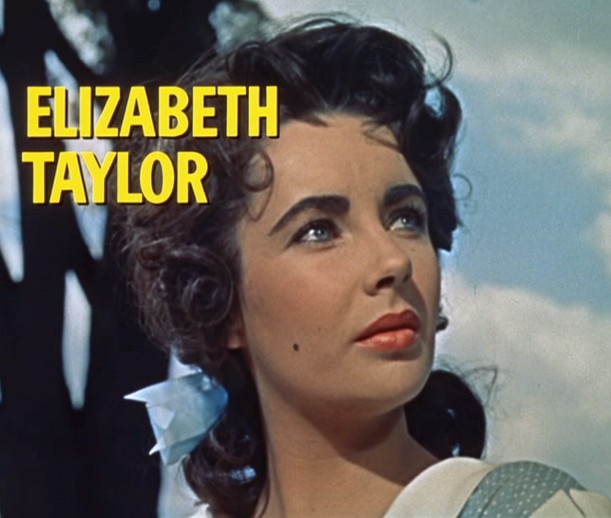
Elizabeth Taylor Wallpapers
Elizabeth Rosemond Taylor was born in London, England, on February 27, 1932. Although she was born an English subject, her parents were Americans, art dealers from St. Louis, Missouri (her father had gone to London to set up a gallery). Her mother had been an actress on the stage, but gave up that vocation when she married. Elizabeth lived in London until the age of seven, when the family left for the US when the clouds of war began brewing in Europe in 1939. They sailed without her father, who stayed behind to wrap up the loose ends of the art business. The family relocated to Los Angeles, where Mrs. Taylor's own family had moved. Mr. Taylor followed not long afterward.

A family friend noticed the strikingly beautiful little Elizabeth and suggested that she be taken for a screen test. Her test impressed executives at Universal Pictures enough to sign her to a contract. Her first foray onto the screen was in There's One Born Every Minute (1942), released when she was ten. Universal dropped her contract after that one film, but Elizabeth was soon picked up by MGM. The first production she made with that studio was Lassie Come Home (1943), and on the strength of that one film, MGM signed her for a full year. She had minuscule parts in her next two films, The White Cliffs of Dover (1944) and Jane Eyre (1944) (the former made while she was on loan to 20th Century-Fox). Then came the picture that made Elizabeth a star: MGM's National Velvet (1944). She played Velvet Brown opposite Mickey Rooney. The film was a smash hit, grossing over $4 million. Elizabeth now had a long-term contract with MGM and was its top child star.

She made no films in 1945, but returned in 1946 in Courage of Lassie (1946). In 1947, when she was 15, she starred in Life with Father (1947) with such heavyweights as William Powell, Irene Dunne and Zasu Pitts. Throughout the rest of the 1940s and into the early 1950s Elizabeth appeared in film after film with mostly good results. Her busiest year was 1954, with roles in Rhapsody (1954), Beau Brummell (1954), The Last Time I Saw Paris (1954) and Elephant Walk (1954). She was 22 now, and even at that young age was considered one of the world's great beauties. In 1955 she appeared in the hit Giant (1956) with James Dean. Sadly, Dean never saw the release of the film, as he died in a car accident in 1955.

The next year saw Elizabeth star in Raintree County (1957), an overblown epic made, partially, in Kentucky. Critics called it dry as dust. Despite the film's shortcomings, Elizabeth was nominated for an Academy Award for her portrayal of Southern belle Susanna Drake. However, on Oscar night the honor went to Joanne Woodward for The Three Faces of Eve (1957). In 1958 Elizabeth starred as Maggie Pollitt in Cat on a Hot Tin Roof (1958). The film received rave reviews from the critics and Elizabeth was nominated again for an Academy Award for best actress, but this time she lost to Susan Hayward in I Want to Live! (1958). She was still a hot commodity in the film world, though. In 1959 she appeared in another mega-hit and received yet another Oscar nomination for Suddenly, Last Summer (1959). Once again, however, she lost out, this time to Simone Signoret for Room at the Top (1959). Her Oscar drought ended in 1960 when she brought home the coveted statue for her flawless performance in BUtterfield 8 (1960) as Gloria Wandrous, a call girl who is involved with a married man and later dies in an auto accident. Some critics blasted the movie but they couldn't ignore her performance

There were no more films for Elizabeth for three years. She left MGM after her contract ran out, but would do projects for the studio later down the road. In 1963 she starred in Cleopatra (1963), which was one of the most expensive productions up to that time--as was her salary, a whopping $1,000,000. This was the film where she met her future and fifth husband, Richard Burton (the previous four were Conrad Hilton, Michael Wilding, Michael Todd--who died in a plane crash--and Eddie Fisher). Her next handful of films were lackluster at best, especially 1963's The V.I.P.s (1963), which was shredded by most critics. Elizabeth was to return to fine form, however, with the role of Martha in Who's Afraid of Virginia Woolf? (1966).

Her performance as the loudmouthed, shrewish, unkempt Martha was easily her finest to date. For this she would win her second Oscar and one that was more than well-deserved, but her films afterward didn't approach the intensity of that one. Since then she has appeared in several movies, both theatrical and made-for-television, and a number of TV programs. In February 1997 Elizabeth entered the hospital for the removal of a brain tumor. The operation was successful. As for her private life, she divorced Burton in 1974, only to remarry him in 1975 and divorce him, permanently, in 1976. She has had two husbands since, Senator John Warner and Larry Fortensky.




No comments:
Post a Comment
Dear Visitor,
Please feel free to give your comment. Which picture is the best?
Thanks for your comment.